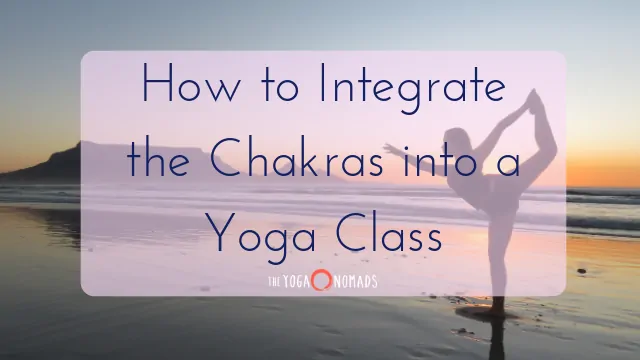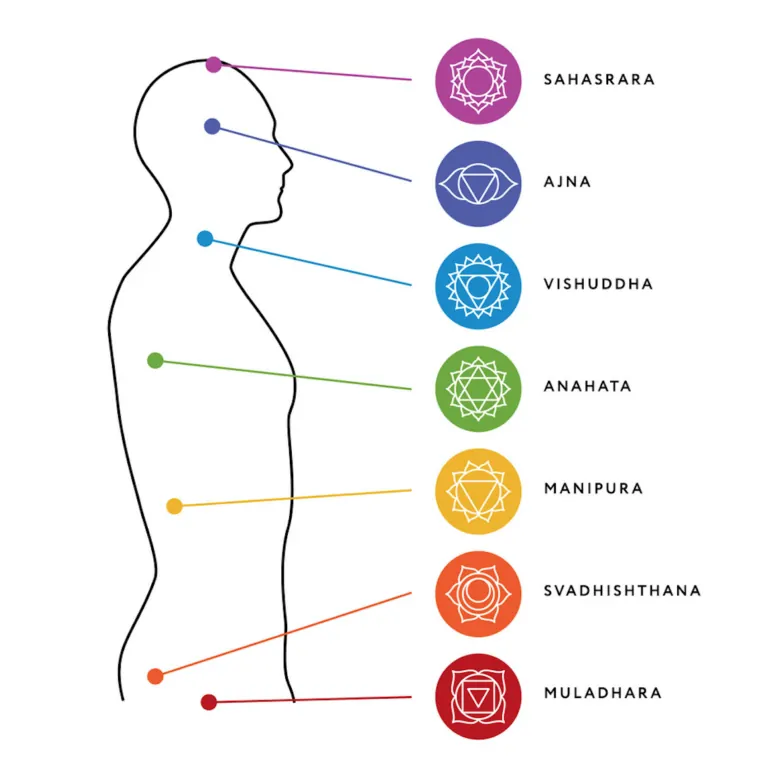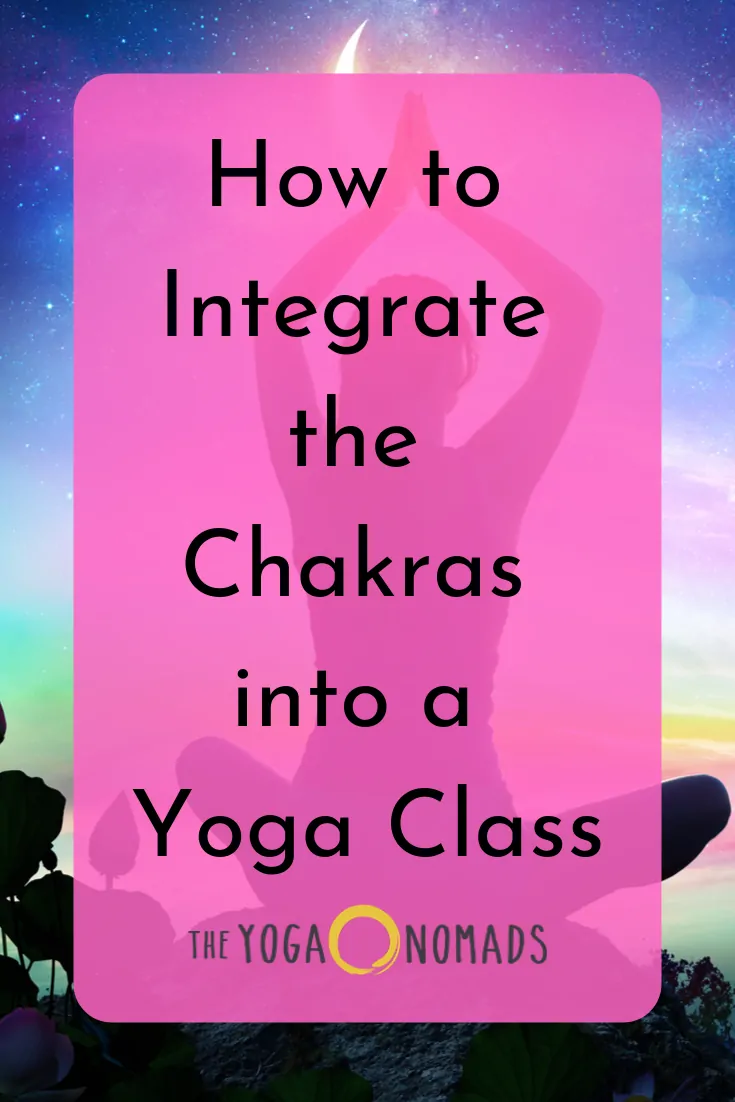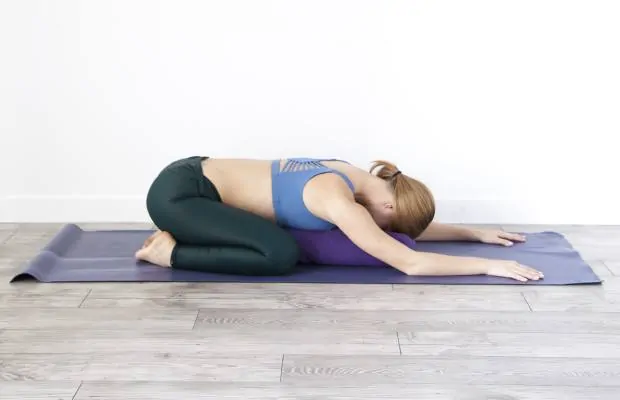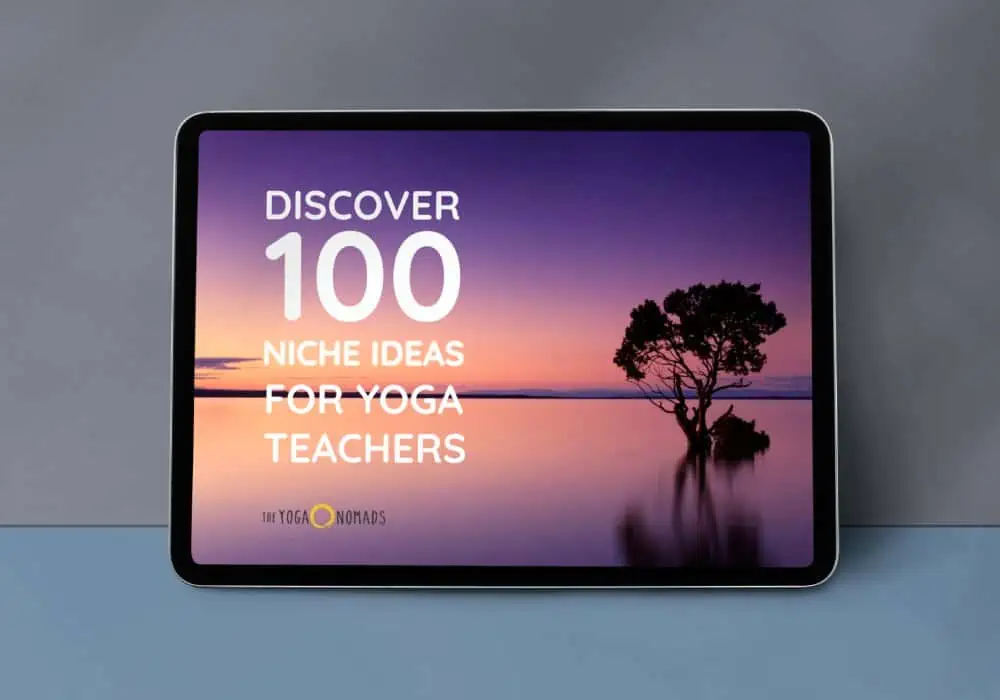In the yogic tradition, chakras are energy centers, or wheels, in the body. We all have many chakras, but there are 7 main chakras, which I’ve listed below.
Integrating the chakras into your yoga classes can take them to the next level. After all, a lot of what we speak about in yoga classes is about energy.
Chances are, you learned about the chakras in your yoga teacher training program. Learning to weave them into your classes is an art form. I’m here to teach you how to do just that. I’ll start with a quick overview of each chakra, and then I’ll move into how you can incorporate them into your yoga classes.
Contents
- 1
- 2 Root Chakra
- 3 Sacral Chakra
- 4 Solar Plexus Chakra
- 5 Heart Chakra
- 6 Throat Chakra
- 7 Third Eye Chakra
- 8 Crown Chakra
- 9 How to Incorporate The Chakras in a Yoga Class
- 10
- 11 Create a flow that draws attention to each chakra
- 12
- 13 Create a flow centered around opening and balancing one specific chakra
- 14 Use seed mantras
- 15 Combination
- 16 PS: Did you like this article? Pin me!
Root Chakra
The root chakra is your center of safety, home, and grounding.
Sacral Chakra
The sacral chakra is your center of physical connections, passion, and creativity.
Solar Plexus Chakra
The solar plexus chakra is your center of power, confidence, and self-worth.
Heart Chakra
The heart chakra is your center of giving and receiving unconditional love.
Throat Chakra
The throat chakra is your center of communication (of course!), speaking your truth, and setting boundaries.
Third Eye Chakra
The third eye chakra is your center of intuition, psychic abilities, and inner wisdom.
Crown Chakra
The crown chakra is your center of connection to the Universe, or divine.
If you want to learn more about the chakras and how to work with them, I recommend picking up Eastern Body, Western Mind by Anodea Judith.
How to Incorporate The Chakras in a Yoga Class
Now that I’ve given you a quick refresher on the chakras, how can you incorporate them into your yoga classes?
Create a flow that draws attention to each chakra
You can create an energetically balanced flow by creating a sequence that uses physical postures to work through each of the chakras. Get creative! The options are endless. Here are some suggestions for poses and types of poses that work with each chakra:
- Root chakra: Grounding poses such as yogi squat, child’s pose and easy pose
- Sacral chakra: Hip openers such as pigeon pose, lizard pose, and dynamic hip circles
- Solar plexus chakra: Core work such as boat pose
- Heart chakra: Heart openers like dancer’s pose and crescent lunge
- Throat chakra: Anything that opens the throat, such as upward-facing dog and neck circles
- Third eye chakra: Shoulder openers like humble warrior and locust pose
- Crown chakra: Headstands, savasana, meditation (once you get into the upper chakras, it’s less physical and more metaphysical!)
Create a flow centered around opening and balancing one specific chakra
If you’re feeling called, you can also create a flow centered around opening one specific chakra. This could be seasonal or related to the current astrology.
For example, during the waxing moon you might like to focus on a solar plexus flow and during the dark moon you might work with the third eye or the crown. During the change of seasons, such as from summer to fall, a root chakra balancing flow can be great!
Free download: 100 Niche Ideas for Yoga Teachers
Download nowUse seed mantras
Each chakra is associated with a bija, or seed, mantra. You can learn more about the history and power of bija mantras in this great MindBodyGreen article.
The seed mantras for each chakra are as follows:
- Root chakra: Lam
- Sacral chakra: Vam
- Solar plexus chakra: Ram
- Heart chakra: Yam
- Throat chakra: Ham
- Third eye chakra: Om
- Crown chakra: Om or silence (there are different traditions with this chakra)
I find that seed mantras work best in one of two ways: woven throughout the practice in conjunction with the corresponding chakra opening physical postures, or as a mantra meditation at the beginning or end of class.
Combination
This option is weaving information about the energetic aspects of the chakras or maybe even seed mantra meditation in with the physical poses in the first two points above. In my opinion, this is the most powerful option because it incorporates both the physical and the metaphysical.
How do you like to work with chakras in your personal practice and in your classes? Comment below and share!
If you’d like to continue to hone your yoga teaching skills, explore some of these resources from The Yoga Nomads:
- How to Incorporate Essential Oils Into Your Yoga Classes
- 25 Yoga Class Theme Ideas (To Inspire Your Teaching)
- How to Sequence a Yoga Class (To Teach Your Best Class Yet)
- 5 Ways to Improve Your Yoga Teaching Skills (As A New Yoga Teacher)

